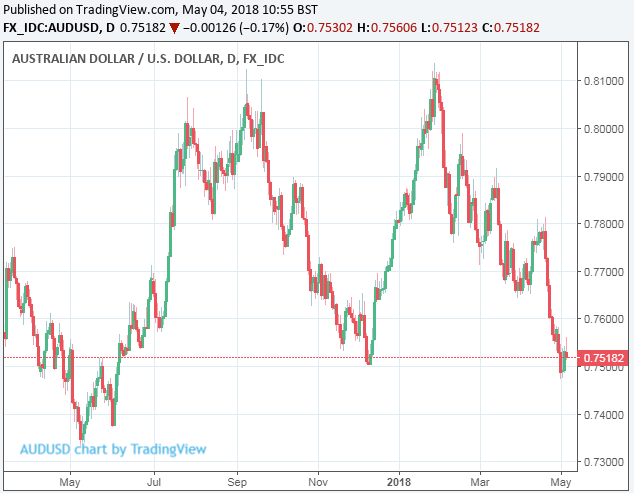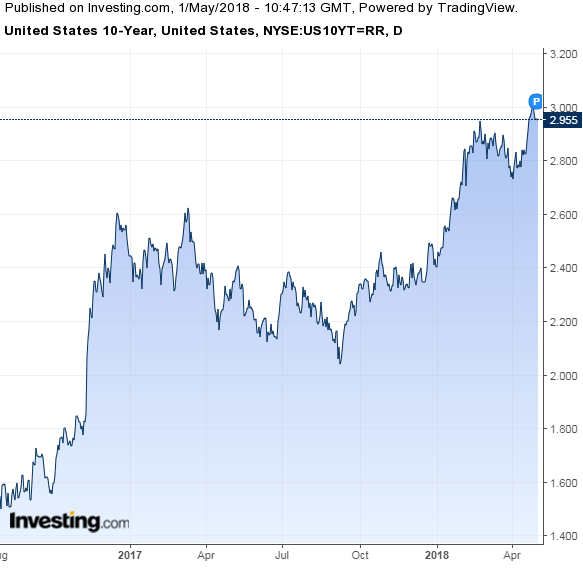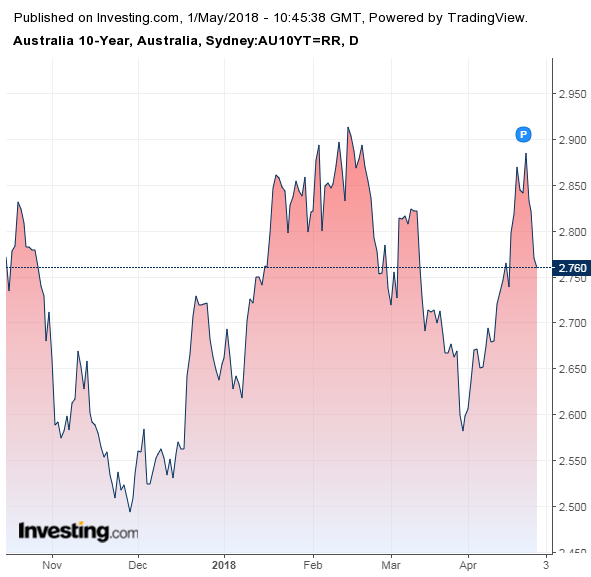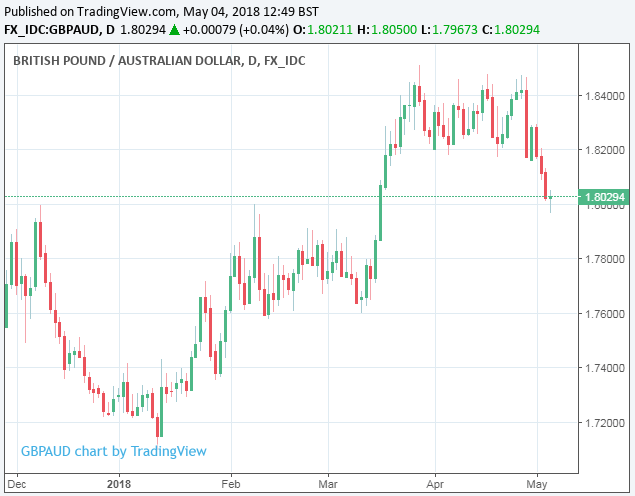Pound / Australian Dollar Forecast Upgraded 5% at Commonwealth Bank of Australia
- Written by: James Skinner
- GBP/AUD forecast for 2018 upgraded by 5% at CBA.
- AUD/USD forecast for 2018 downgraded by 6%
- Global growth, stronger USD and go-slow RBA drive changes

Image © Pound Sterling Live
The Australian Dollar's recovery against the US Dollar will be slower and shallower than previously thought, according to the latest set of forecasts from Commonwealth Bank of Australia.
Slower global economic growth, a firmer US greenback and a Reserve Bank of Australia that is stuck in the go-slow lane when it comes to interest rates have all served to dim the Aussie Dollar outlook for the remainder of 2018.
Downgrades to the AUD/USD profile have in turn prompted an upgrade to the Pound-to-Australian Dollar exchange rate.
"It is difficult for us to get bearish on AUD when the global economy is still firm, the Australian domestic economy is forecast to grow 3.0% in 2018 and 2019, and the RBA Governor Phil Lowe, continues to repeat the forward guidance that 'the next move in interest rates is up'," says Elias Haddad, a senior currency strategist at Commonwealth Bank. "However, it will take some time for AUD to return to strength, and the currency forecasts are adjusted to reflect this."

Above: AUD/USD rate shown at daily intervals.
Australia's Dollar saw a volatile start to 2018, rising, falling and then rising again by close to 5% during the first quarter alone. That volatility also spilled over into the second quarter, with April delivering a crushing blow to the Aussie unit that forced the AUD/USD exchange rate close to a one-year low as the greenback strengthened across the board.
A softer performance from the global economy and increasing divergences between Australian and US interest rates have been the primary drivers behind the sell-off. The Federal Funds rate of 1.75% is now higher than Australia's cash rate of 1.5% and US 10 year bond yields of nearly 3% are also above those of their Aussie counterparts, which currently sit at 2.77%.

Above: 10 Year US Government Bond Yield.
"The U.S. inflation outlook remains at the centre of these recent currency movements and the main driver of the lift in the U.S. ten-year bond yield. Our CBA Fixed Income Research team believe the U.S. ten-year bond yield will peak around 3.20% at the end of September," says Haddad.
This turned the tables on the Australian Dollar, which traditionally enjoyed support from higher interest rates and bond yields, prompting international investors to sell the Aussie currency in order to buy the greenback and invest in US assets such as Treasury bonds.

Above: 10 Year Australian Government Bond Yield.
But CBA say the worst is now over and any future rise in US yields should take global bond yields higher too, neutralising the impact on currency markets.
However, for the Aussie to become truly insulated from further weakness of this nature then the Reserve Bank of Australia, which is in danger of being left behind by other central banks, will need to begin raising interest rates from their record lows.
"CBA Economics has pushed out the timing of when the RBA lifts interest rates, and this has been a factor in lowering our AUD forecasts," Haddad notes.
The RBA has held its cash rate at 1.5% for nearly two years and any increase will first require a return of inflation toward the higher end of the 2% to 3% target. The Bank itself sounded an upbeat tone on the Australian growth outlook in a statement Friday and made some upward revisions to its projections for inflation, but few expect it to lift the cash rate until well into 2019.
"We anticipate a re-strengthening of the global economy given very accommodative monetary policy and fiscal stimulus packages by a selection of the world’s major economies," says Haddad.
The Aussie's status as a commodity-backed and 'risk-on' currency means it was always going to fare poorly during times like the first quarter of 2018, which saw developed world economies slow noticeably from 2017 peaks. The US, UK, Eurozone and Canada all experienced a slowdown in the first quarter but the CBA team say this was mostly just a blip.

Above: Pound-to-Aussie rate shown at daily intervals.
"The accommodative interest rate environment will see the Eurozone and the U.K. economies regain economic momentum over coming quarters, generating a lift in their exchange rates back towards the top of their recent trading ranges," the strategist adds.
The Pound has risen substantially against its Aussie rival during 2018, clocking up a 5% gain. This is a move that has been outdone only by the Pound-to-Swedish-Krone exchange rate, which is up by 8.5% since January. And CBA forecasts suggest the exchange rate could rise further still before year end.
"We have effectively pushed out the timing in which AUD/USD lifts to 0.8300 by twelve months," says Haddad. "For end-2018, we now see the AUD/USD at 0.7800."
This is a downgrade from CBA's earlier forecast for an AUD/USD rate of 0.83 by year-end but there is a silver lining in this particular cloud for Pound-to-Aussie buyers: The CBA team have held their 2018 Pound-to-US-Dollar forecast steady at 1.4200 which, when combined with the lower AUD/USD forecast, points to an even higher Pound-to-Aussie rate.
They now forecast Sterling to rise to 1.8204 against the Aussie before the year is out, which is a substantial upgrade from the 1.7108 forecast issued back in November 2017.
Advertisement
Get up to 5% more foreign exchange by using a specialist provider to get closer to the real market rate and avoid the gaping spreads charged by your bank when providing currency. Learn more here.




